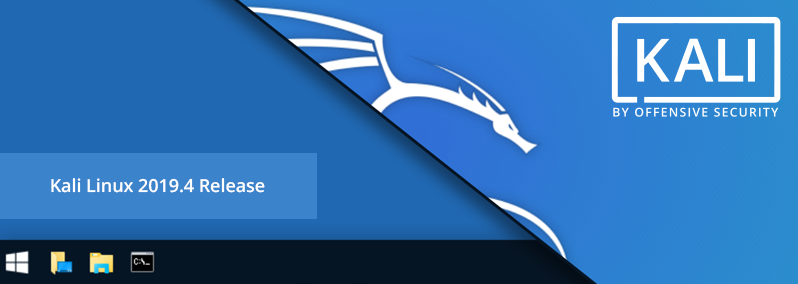Kali Linux 2019.4 Security Testing Distribution Released
The release of Kali Linux 2019.4, a distribution designed for vulnerability assessment, auditing, forensic analysis, and investigating the aftermath of cyberattacks, has been announced. All original developments created within the distribution are released under the GPL license and are available through a public Git repository. Several ISO image options are available for download, sized at 1.1, 2.6, and 3.1 GB. Builds are provided for x86, x86_64, and ARM architectures (armhf and armel, Raspberry Pi, Banana Pi, ARM Chromebook, Odroid). In addition to the standard build with Xfce and a minimal version, variants with KDE, GNOME, MATE, LXDE, and Enlightenment e17 are also offered.
Kali Linux includes one of the most comprehensive collections of tools for cybersecurity professionals: from utilities for web application testing and wireless network penetration to programs for reading data from RFID identification chips. The distribution comes with a collection of exploits and over 300 specialized security testing utilities, such as Aircrack, Maltego, SAINT, Kismet, Bluebugger, Btcrack, Btscanner, Nmap, and p0f. Additionally, the distribution includes tools for accelerating password and WPA key cracking (Multihash CUDA Brute Forcer and Pyrit) by leveraging CUDA and AMD Stream technologies, allowing the use of NVIDIA and AMD GPUs for computational tasks.
What’s New in This Release
- Xfce is now the default desktop environment instead of GNOME. The use of a lightweight environment has reduced system requirements and unified the desktop experience with the ARM device edition.
- A new GTK3 theme is available for both GNOME and Xfce.
- The new “Kali Undercover” mode simulates a Windows interface to avoid drawing attention when using Kali in public places.
- Documentation has been converted to Markdown format, moved to Git, and placed in the new /docs/ directory.
- A guide for building custom Kali packages is now available.
- The installer now includes an option to use the Btrfs filesystem for the root partition.
- A package with the pwsh shell has been added, allowing PowerShell scripts to be run directly from Kali.
- The NetHunter Kex environment has been added, enabling a full Kali desktop to run on Android devices (connect a display, keyboard, and mouse to a smartphone with an HDMI port).
- The Linux kernel has been updated to version 5.3.9.
NetHunter 2019.4 Release
At the same time, NetHunter 2019.4 has been released—a mobile environment for Android devices featuring a suite of tools for vulnerability testing. With NetHunter, users can test attacks specific to mobile devices, such as emulating USB devices (BadUSB and HID Keyboard—emulating a network USB adapter for MITM attacks or a USB keyboard for keystroke injection) and creating rogue access points (MANA Evil Access Point). NetHunter is installed in the standard Android environment as a chroot image running a specially adapted version of Kali Linux.



